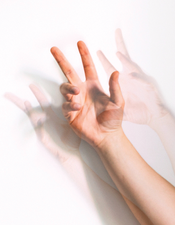Use gestures to browse a document on your Raspberry Pi
Hands Free

© Photo by Sebastian Dumitru on Unsplash
Have you found yourself following instructions on a device for repairing equipment or been half-way through a recipe, up to your elbows in grime or ingredients, then needed to turn or scroll down a page? Wouldn't you rather your Raspberry Pi do the honors?
This article is about the joy of tinkering, and the project I look at is suitable for all kinds of situations when your hands are full or just dirty. The hardware requirements turn out to be quite low: a Raspberry Pi, a screen, and a gesture sensor. My choice of sensor was the APDS9960 (Figure 1), for which you can get breakouts and an I2C connector for a low price at the usual dealers ($3.20-$7.50). However, you should note whether the sensor has soldered jumpers. The left jumper (PS) controls the power supply of the infrared lamp with the pin for positive supply voltage (VCC) and definitely needs to be closed. The right jumper (labelled 12C PU on the sensor in Figure 1) enables the pullups on the clock line (SCL) and the data line (SDA), which is superfluous on the Raspberry Pi; however, it doesn't hurt to have it.

Modern kitchens sometimes feature permanently installed screens. If you don't have one, go for a medium-sized TFT screen like the 7-inch Pi screen or a model by Waveshare (Figure 2). If you are currently facing the problem that the Raspberry Pi is difficult to get, as many people have, you can go for a laptop instead, which I talk about later in this article.
[...]
Buy this article as PDF
(incl. VAT)
